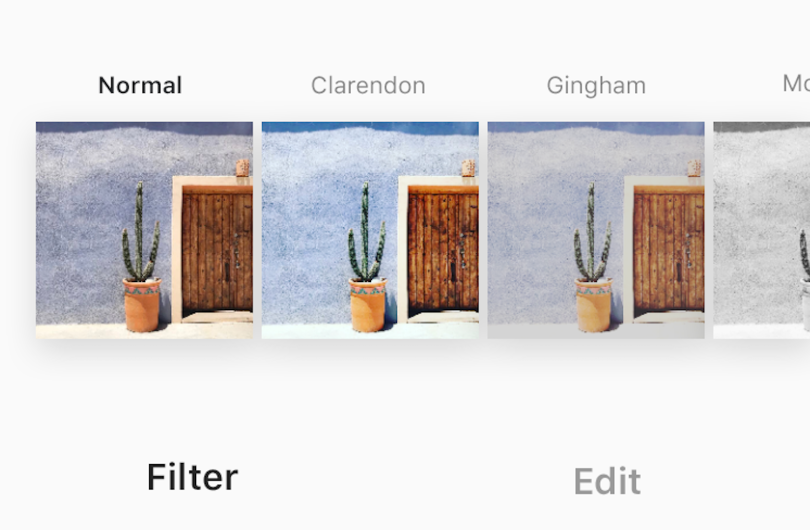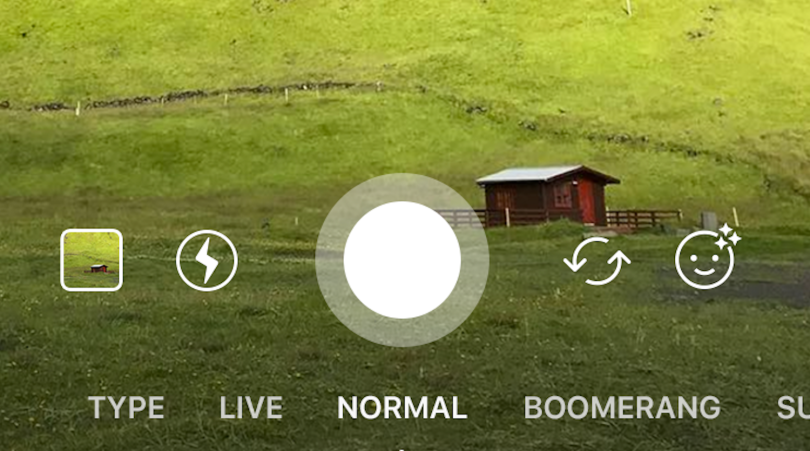The chefs were shucking oysters at the No Name Cafe at the Googleplex. Kevin Systrom, then an employee at Google, was thinking to himself this had to be the industry’s peak: “We’ve got to be at a moment in technology, or a moment at this company, where it’s the best it’s going to get.”
He was wrong, of course. Google would only continue to grow. Tech would see even greater prosperity. But, at that moment, Systrom knew the time was right: he was ready to shed his product marketing role at the tech giant and start something new.
That something became Instagram, the photo and video sharing site the 36-year-old co-founder, who was CEO from 2009 to 2018, led on a meteoric rise to one billion monthly users, overseeing the business strategy and product roadmap, including the launch of advertising on Feed and Stories.
Recounting the origin story in an October 21 talk hosted by Florian Otto, the CEO of the healthcare platform Cedar, Systrom compared his career transition to “jumping into a cold ocean.” The contrast between life on Google’s campus — organic lunches, free shuttles to work, state-of-the-art research tools — and the hustle and grind inside the low-lit co-working space where he and Mike Krieger founded Instagram could not have been more stark.
One night, around 1 a.m., he glanced over at Krieger and could see the wisps of his breath. “It was that cold in our office” he said. “It was different, but it’s the kind of different that someone who loves that different thrives on, and I did love it.”
In a way, the bootstrap approach was nothing new. From an early age, Systrom had been sharpening his entrepreneurial instincts. He started a radio station at the boarding school he attended, setting up an antenna outside his dorm window before realizing broadcasting from his room was illegal. Years later, as a student at Stanford University, he launched a digital radio station, along with several websites “that worked well, but weren’t consumer hits.”
To fulfill the requirements of the prestigious Mayfield Fellows program, he began an internship at Odeo, a search destination website for RSS-syndicated audio and video, where he met a few other whiz kids interested in computers and building things.
Among them were Twitter’s creators, Ev Williams and Jack Dorsey.
“In fact, I think the day Jack started his first day as an engineer at ODEO was my first day as an intern. So we became fast friends and learned from each other on the job. Really, I learned from him. That was my first foray into social media.”
His tenure at ODEO gave him the connections and skill set to start Bourbon, a precursor to Instagram where you could check in at a bar, a restaurant or a house, and post a photo of where you were. Even back then, a real-time photo sharing site with cool filters seemed a good idea to Systrom, but the wide-scale adoption of such a platform was hardly a sure thing. When he later pitched Instagram to investors, they brushed it off as a stale idea with a short shelf life.
“They’re like: ‘Photos, why would you do photos? There’s no money in photos,’” Systrom told Otto. “And they used to show this graph of exits in video and exits in photos, and photos was this tiny small graph and YouTube was huge, and everyone’s like, ‘This is the future.’”
“Far too often, people assume that just because an area is old or has been tried a bunch before, there’s not an opportunity there.”
Systrom actually agreed with them. But, in his view, it wasn’t a zero-sum game. Prior to Instagram, the last innovation in digital photo sharing was the tagging feature in Facebook. He saw room for disruption in a crowded space, and took a calculated risk.
“Far too often, people assume that just because an area is old or has been tried a bunch before, there’s not an opportunity there. And clearly with Instagram, there was.”
After a long track record of successful initiatives, Systrom and Krieger abruptly resigned from Instagram in September of 2018. They are currently working on several projects at the intersection of data science and machine learning, including rt.live, a publicly available coronavirus tracker initially developed for state officials based on R-naught, a metric epidemiologists use to chart the velocity of viral spread.
During his conversation with Otto, Systrom unveiled many of the insights that made Instagram what it is, including its approach to design, data collection, user engagement, advertising, hiring and growth.
Here are seven key lessons from the wide-ranging talk.

Stay Lean, but Don’t Starve Yourself
With only 13 employees, Instagram amassed a user base of 30 million people. This fact is often touted as an example of the benefit of a lean product methodology. But Systrom said it’s not clear whether the company’s success was because of, or despite, its tiny staff.
“When I talk to founders, they say, ‘Look, we only have a team of 20, we’re doing what you did, we’re following your model,’” he told Otto. “And I think to myself, if I could go back and do it again, I would have hired five times as many people.’”
Growth and hiring can be difficult to balance. Whereas a bloated staff can quickly lose focus, a lean team can keep employees hungry and focused on “solving the right problems.”
Prior to the Facebook acquisition, Instagam was only available on iOS; the Instagram app and its iconic square form factors were narrowly defined on one platform, Systrom told Otto. Still, the company was probably too big for its britches. Hiring more aggressively would have helped absorb the early demands of its growth.
“I’m a big believer that constraint breeds creativity, but there’s a certain level where constraint just kills everything. So you need to find that happy medium,” Systrom said.
Imagine the Ocean Users Have to Cross
Instagram, in a very real sense, was born in a small room in Systrom’s home in Palo Alto. A hobbyist photographer with access to Photoshop, he spent hours at his desk tinkering with overlays, layering and opacity. He taught himself about color filters through online video tutorials.
“But think about the ocean that exists between that experience and most people who are taking photos on their phones. It’s enormous,” he said.
“It’s as if you’re taking two charged particles and bringing them close enough together and then zap. That’s what product development should be.”
That gulf, which Systrom described as the distance between continents, is where innovation can happen. Prior to its inception, all the ingredients for Instagram — mobile phones with high-resolution cameras, filtering apps like CameraBag and social media platforms like Facebook and Twitter — existed independently. They just hadn’t been put together in a single place.
Until Instagram.
“It’s these minor little things that you bring closer together, and then that unlocks this connection. It’s as if you’re taking two charged particles and bringing them close enough together and then zap. That’s what product development should be.”

Learn Like a Dynamic System
All startups make mistakes, and Instagram was no different. When the company was still finding its sea legs, it was renting a server rack from an LA company called ServerBeach, and the server was housed in a co-working space. At some point, someone asked why they weren’t on AWS.
“I remember just thinking: ‘Well, I don’t know. That’s what we did at Odeo, that’s what I’m doing now,’” Systrom said. “He’s, like, ‘Well, you should probably take a look at AWS.”
Eventually, Instagram linked its rack to AWS and ran it over the public internet — an extremely slow solution that no company with expertise in server architecture would consider now.
“The point is not, do you make mistakes? The point is, how quickly do you learn?” Systrom told Otto.
Solve User Problems, Not Your Company’s
Executive decision-making falls into two principal categories: product decisions and people decisions. These set the course for success or failure.
Early versions of Instagram video and direct messaging missed the mark because they lacked relevance to users. “Telling [users] they should use something just because we thought it was cool” didn’t work, Systrom said. So the team reframed its approach, focusing its energy on gauging users interests and problems.
“They’re going to tell us what they love, what they don’t love, and they’re going to be ruthless about it in a way that employees are not,” he said.
Once the product team switched its orientation, Instagram enjoyed a string of victories. An acclaimed app redesign and releases like Instagram Direct, a private user-to-user chat service with read receipts, and Instagram Stories, a horizontal feed for time-bounded, ephemeral posts, marked the high notes of a year-long run.
“How you tend to think of Instagram — hashtag this, pictures in a cool cafe, framed photos — you quickly realize that’s total bullshit.”
Learning about users and their habits was not simply a matter of guesswork, of course. An internal tool developed by the engineering team, Fiddler, helped Instagram evaluate users’ behavior with nuance and precision. When users posted publicly, the tool could filter a particular demographic — say, men 18 to 24 from New Jersey — and retrieve a recent selection of posts or stories from their feed.
“How you tend to think of Instagram — hashtag this, pictures in a cool cafe, framed photos — you quickly realize that’s total bullshit,” Systrom said.
Instead, Instagram’s core user base comprised people at home, often teens, killing time with friends. Understanding this, the product team developed a polling sticker on Stories that allowed users to ask questions, see friends’ responses and respond in return. It was an instant success.
Make No Compromises in Your Hiring Process
Despite investors’ early reluctance to get behind a photo-sharing app, Instagram got off the ground just fine. So did Snapchat. So did TikTok.
“People underestimate how much space there is, as long as you have great leadership, great design and great product instincts,” Systrom said.
Still, your product offering has to be differentiated.
One way Instagram established its cultural cache is through hiring practices that focused on community building. The company’s first hire was a community manager, not a software engineer.
“I would rather have an open position for a year than fill it because you just feel like you have to fill it.”
“We wanted to do meet-ups and figure out how to inspire creativity among this community and give them the tools they wanted and keep them really close to the product development that we were doing,” Systrom explained.
The company’s founders also took their time finding the right people. “I would rather have an open position for a year than fill it because you just feel like you have to fill it. I think that’s one mistake that every company makes time in and time out, and it ends up costing so much more in the long run.”
Junior employees, if they are encouraged to take on new responsibilities, are often the best fit, Systrom said, and executives and hiring partners should pay close attention to their development.
“One of the guys I talk to a bunch and follow is Ray Dalio, and he talks a lot about personal leverage in his company, and how every hour of work he does equals 50 hours of work,” Systrom said. “As a leader, whether you’re a product manager or junior employee, you always have to think, ‘For every hour I put in, how many hours am I getting out?’ How can I increase that over time?’ If you frame the world that way, it gets a lot more interesting.”

Keep Advertisements Native, Relevant and Minimally Intrusive
At some point, to keep a company sustainable and profitable, you have to make money. Instagram had the examples of Facebook and Twitter to look to for assurance that advertising could be a viable revenue model.
The billion-dollar question was how to introduce it without alienating users, who had grown accustomed to an ad-free stream. Instagram’s square form factor — the framed photos that scroll so neatly on a mobile phone — was it’s raison d’être. But they needed to relax that constraint to allow advertising onto the platform. More importantly, they needed to make advertising feel at home alongside the infinite scroll of photos of users’ friends.
“It turns out, advertising doesn’t perform well when it doesn’t feel native to the platform. So, if it doesn’t have comments or likes, it doesn’t feel natural,” he said.
An even more vexing question was how to optimize the ad load so it didn’t jeopardize the intimacy of the user experience. Whether that balance has been successfully struck remains a subject of debate, but Systrom and his team decided that populating the site with ads was a fair trade to continue to give users unfettered access to a free platform.
“It turns out, advertising doesn’t perform well when it doesn’t feel native to the platform. So, if it doesn’t have comments or likes, it doesn’t feel natural.”
“There’s, of course, the extreme, which is you dial up the ad load to the max and that feels like a crappy experience and you can see it in the engagement metrics,” Systrom told Otto. “So the question is threading that needle and figuring out where you lie. And it turns out there are different amounts for different people, based on their engagement.”
Relevance was another important consideration. Systrom and his team believed — with data as corroboration — that if ads felt personalized, perhaps even useful, they would seem less off-putting to users.
Finally, there’s the issue of timing. Systrom said that, by the time Instagram launched Stories, he had learned an important lesson: If users are habituated to ads at an early stage in the product life cycle, they are more likely to accept them as a fundamental part of the experience.
“We should be doing advertising earlier rather than later. This is going to take a long time and we don’t want to introduce a product and have it around for five years not having advertising. When people expect it, that’s the status quo.”
Look to Growth Analysis: The Next Frontier
The history of the internet is astoundingly short, Systrom told Otto. Though books exist on how to balance hard data with elegant design, they are few and far between. Analytic models like cohort curves that measure user retention over time are just coming into the modern lexicon. Over the next five to 10 years, he predicted, startups are going to be able to achieve success far more quickly, because they will have access to the kind of rigorous data models he and Krieger had to discover through experimentation.
“I think we need to realize there’s this arbitrage opportunity where the best practices from some of the smartest folks who are just out of college and have learned new ways to build businesses and products haven’t yet been applied to older industries,” Systrom said.
And therein lies the future, for those savvy enough to claim it.




